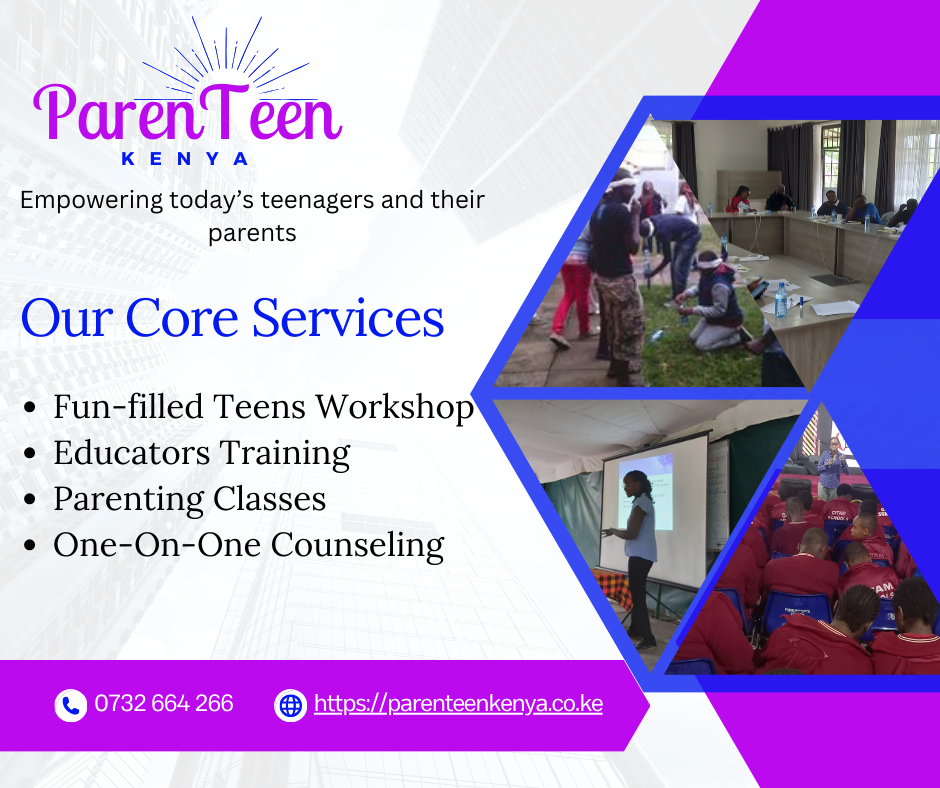Being a teenager has never been easy, but today’s teens face challenges we never imagined.
Back when we were young, parents were mainly worried about getting homework done and kids coming home on time.
Now? Our teens live in two worlds at once, their real life and their online life, and they’re dealing with more pressure than ever before.
As parents, we often feel stuck. Should we step in or step back? Are we helping too much or not enough?
Our teens face both old and new problems. They’re trying to figure out who they are, just like we did, but now they’re doing it with the whole world watching on social media.
Their everyday worries are made bigger by a world that’s always switched on.
In the next section, we will share the most common challenges teenagers face and offer some solutions you can use to help them cope or solve their problems.
Social Media and Self-Worth
Today’s teenagers are growing up in a digital world where their self-worth is increasingly tied to their online presence.
Unlike previous generations who could leave social pressures at school, modern teens carry these pressures in their pockets 24/7.
Their sense of self is constantly being shaped by likes, followers, and carefully curated online personas.
The pressure to maintain a perfect online image while managing real-life relationships creates unprecedented stress. The following table summarizes the impact of social media has on a teen’s self-worth:
| Aspect | Effect on Self-Worth | Real-Life Impact |
| Likes/Comments | Immediate validation or rejection | Mood swings, anxiety |
| Follower Count | Measure of social status | Social ranks, exclusion |
| Photo Filters | Unrealistic beauty standards | Body image issues, eating disorders |
| Highlight Reels | Comparison with others’ “perfect” lives | Depression, feelings of inadequacy |
| Online Validation | Addiction to external approval | Decreased self-reliance |
| Digital Footprint | Fear of making mistakes | Anxiety about permanent record |
The constant exposure to edited, filtered, and curated content (from platforms like Instagram) creates a distorted view of reality.
Teens often feel pressure to maintain multiple social media accounts, each requiring different personas and constant attention.
This digital juggling act can lead to exhaustion, anxiety, and a fragmented sense of self.
Five Key Solutions for Parents
- Delay smartphone access until later, starting with a basic phone if needed.
- Create and enforce technology-free zones and times at home.
- Model healthy social media habits and discuss online vs. reality.
- Encourage real-world activities and face-to-face connections.
- Build self-worth through accomplishments and character, not likes and followers.
Friendships, Fitting In, and Finding Themselves

When 14-year-old Maya suddenly abandoned her longtime love of art club to join the popular crowd’s activities, her parents worried.
But this constant shifting of interests, friends, and identities is part of modern teen development.
Today’s teens navigate multiple social circles, from school friends to online communities, each demanding different versions of themselves.
Fitting in during teenage years feels like survival, not choice.
The pressure intensifies as teens try to balance their authentic selves with peer acceptance.
They often face conflicting expectations. This pressure creates a challenge for them in their social world. For instance, they are conflicted in the following ways:
- School Identity vs. Home Identity
- Online Persona vs. Real Personality
- Individual Expression vs. Group Acceptance
- Cultural Background vs. Peer Culture
- Past Friendships vs. New Social Opportunities
The friendships change rapidly during these years. Close friends from childhood might drift apart as interests diverge.
New friendships form based on shared activities, values, or social status.
While parents might see these changes as concerning, they’re often necessary steps in identity formation.
Some teens find their tribe quickly; others might float between different groups before finding where they truly belong.
Five Key Solutions for Parents
- Create a non-judgmental home environment where they can freely discuss social challenges.
- Encourage activities that align with their authentic interests, even as these change.
- Help maintain perspective about friendship changes being normal and often temporary.
- Support healthy risk-taking in identity exploration while setting clear safety boundaries.
- Share your own teenage friendship stories and lessons learned.
Mental Health & Well-being and Concerns
Modern teenagers face mental health challenges that stem from multiple sources—academic pressure, social expectations, global concerns, and constant connectivity.
What might look like typical teenage mood swings could be signs of deeper emotional struggles.
Today’s teens are more aware of mental health issues but often feel overwhelmed by the intensity of their experiences. Examples of Mental Health Challenges in Teens include:
- Constant Anxiety: Teens face social anxiety due to online comparison, academic performance anxiety, and generalized worry about the future.
- Depression: Feelings of isolation despite constant online connection, academic stress, and social rejection contribute to depressive symptoms.
- Identity-Related Stress: Challenges around gender and sexuality, cultural identity, body image, and self-worth cause ongoing stress and self-doubt.
- Sleep Challenges: Poor sleep patterns, fueled by late-night screen time, negatively affect mood and mental resilience.
Despite reduced stigma, many teens still find it hard to express their emotional needs. They may mask these struggles with excessive screen time, disrupted sleep, or withdrawal from activities they once enjoyed.
Over time, these coping mechanisms can intensify feelings of loneliness, frustration, and self-doubt, making it harder for teens to manage stress.
Five Key Solutions for Parents
- Create regular check-in times that feel natural and non-intrusive
- Learn to recognize warning signs of serious mental health issues
- Maintain connections with school counselors and mental health professionals
- Encourage healthy coping mechanisms like exercise, arts, or journaling
- Normalize therapy and emotional support as routine health maintenance
The following video goes into more detail about how you can help your teen improve their psychological well-being.
Related: Why are Teenagers So Angry: How You Can Help
Difficult Parent-Teen Relationship
The parent-teen relationship often becomes strained during adolescence, with both sides feeling misunderstood and frustrated.
Understanding the dynamics can help bridge the communication gap. The following table shows how the parent and teen have different perspectives and the impact it has on their relationship.
| Parent Perspective | Teen Perspective | Impact on Relationship |
| Protection & Control | Need for Independence | Power Struggles |
| Experience-based Advice | Want to Learn from Mistakes | Communication Breakdown |
| Traditional Values | Modern Worldview | Cultural Disconnect |
| Academic Focus | Social Priority | Constant Tension |
| Long-term Concern | Present-moment Living | Frequent Conflicts |
Parents often react to normal teenage behavior changes with increased control, which can backfire.
Teenagers pushing boundaries isn’t rebellion – it’s development. When parents don’t adjust their parenting style to match their teen’s growing independence, the relationship suffers.
Common triggers include disagreements about screen time, academic expectations, social activities, and household rules.
The relationship is further complicated by generational differences in communication styles.
Parents might prefer face-to-face conversations while teens are more comfortable with digital communication.
This disconnect can lead to misunderstandings and missed opportunities for connection.
Five Key Solutions for Parents
- Adapt parenting style to match your teen’s development stage.
- Choose your battles and let go of minor issues.
- Respect privacy while maintaining appropriate boundaries.
- Create opportunities for casual conversation without pressure.
- Acknowledge and validate their growing independence.
Substance Use and Abuse

Teen substance use has changed dramatically over the years.
While traditional concerns about alcohol and marijuana remain, new threats like vaping, prescription drug misuse, and designer drugs have emerged.
Today’s teens encounter sophisticated marketing through social media and peer networks, which makes prevention more challenging than ever. Modern substance use often begins in subtle ways:
- Vaping: Marketed as a “safer” alternative to smoking, often with flavors that appeal to teens.
- Prescription Medications: Easily shared among friends, especially for pain relief or stress management.
- Cannabis Products: Consumed in more appealing forms, such as edibles or oils, which seem less harmful than smoking.
- Study Drugs: Prescription stimulants like Adderall are used to enhance academic performance.
- Designer Drugs: Synthetic substances created to mimic traditional drugs, sometimes marketed as “legal highs.”
- Social Media-Driven Trends: Substances that gain popularity online, often glamorized by influencers or viral content.
Many teens turn to substances as a way of managing the pressures and modern life challenges.
Academic stress is a major driver, as students seek ways to stay focused or manage the intense pressure to perform.
Social anxiety and the need to fit in can also lead teens to experiment, especially in settings where drug use is normalized as part of party culture or peer acceptance.
Additionally, mental health struggles like depression or anxiety can make substances appealing as a form of self-medication, offering temporary escape or relief.
Finally, for some teens, the curiosity to try something new, the thrill of experimentation, or the desire to escape personal problems fuels substance use, making it difficult to resist these modern temptations.
Five Key Solutions for Parents
- Start open conversations about substances early, focusing on health rather than punishment.
- Stay informed about current drug trends and street names.
- Create a safety plan that includes no-questions-asked pickup when needed.
- Build strong connections with your teen’s friend group and their parents.
- Address underlying issues like anxiety or depression that might lead to substance use.
Need Help With the Teen Challenges You are Experiencing?
We understand that parenting teenagers in today’s world can feel overwhelming.
As parents, we’re learning to navigate these challenges alongside our teens, often feeling like we’re walking on eggshells or missing the mark.
At ParenTeen Kenya, we’re here to support you and your teenager through this journey.
Our professional counselors and parent coaches offer individual therapy, family sessions, and practical parenting workshops designed for our unique Kenyan context.
Let’s work together to bridge the generation gap, strengthen family bonds, and help our teens thrive. Contact us to learn more about how we can support your family’s journey.
Jane Kariuki is a devout Christian, Clinician, Psychologist, and founder of ParenTeen Kenya. She authored an exceptional training manual used in her teens’ workshop and an instructional guidebook for her parenting classes. If she is not training, blogging, or counseling, Jane loves to spend time with her sweet husband and three children.







